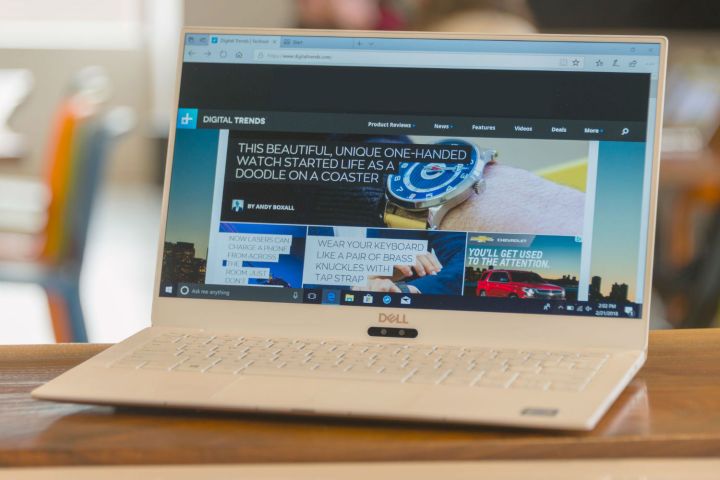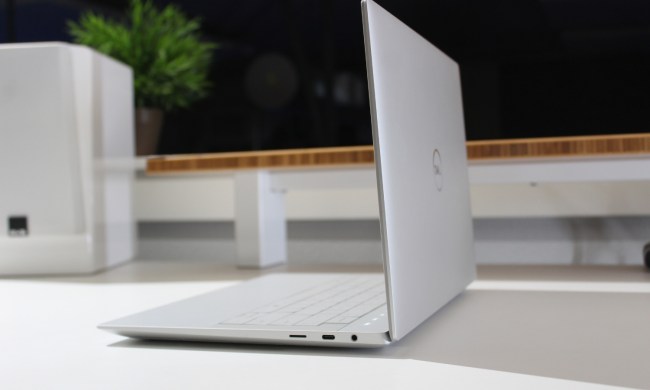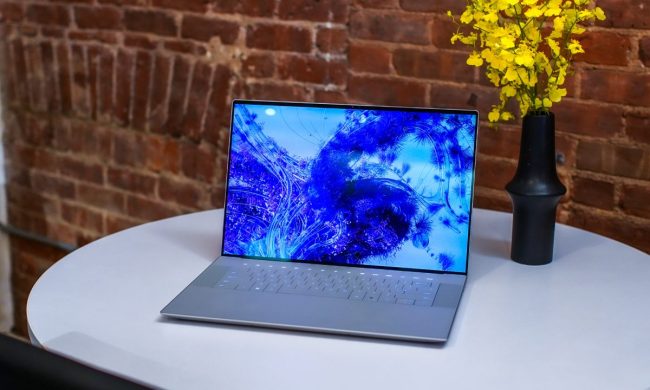
When it comes to light, affordable, but powerful mid-range laptops, the Dell XPS 13 and the Razer Blade Stealth are two of the best out there. What happens when we pit them head to head though? In the battle of the Razer Blade Stealth vs. Dell XPS 13, which comes out on top?
Design
As one of the best looking laptops we’ve ever come across, it’s hard to beat the XPS 13 on style. However, the Razer Blade Stealth makes a good try. It has a sleek look to it, with an aluminum surface that gives it the look of premium Apple hardware like the MacBook Pro. That does mean it’s not the most striking, but it will look right at home in the mid-range that Razer’s targeting with its new release.
Until you open it. While the Blade Stealth’s screen looks great, its bezels are far chunkier than most contemporary hardware, and make the XPS 13 look like a generation ahead of its Razer counterpart on that point alone. However, that does mean that the Blade Stealth has enough room to fit its 720P webcam in the top of the display’s frame, rather than the base as in the XPS 13, making video calls far more flattering for the user.
In terms of connectivity, Razer opted to include a pair of USB-A ports alongside a Thunderbolt 3 port and an HDMI output. That gives it greater functionality out of the box than the XPS 13, which dropped all support for the older USB standard in favor of a pair of Thunderbolt three ports and a USB-C 3.1 port.
The Thunderbolt 3 port that the Blade Stealth does have though, has a dual purpose. While it can provide charging and high-speed data like any USB-C port, Razer is also marketing it as a potential avenue for external graphics. Razer’s own Core v2 external graphics enclosure was debuted alongside the new Blade Stealth last year and is marketed by Razer as a way of expanding the capabilities of this laptop when in a home setting.
Winner: Dell XPS 13
Performance

Although neither of these laptops are designed as gaming machines by themselves, they are both very capable laptops when it comes to just about everything else. The Blade Stealth sports a Core i7-8550U throughout the range, so is technically more powerful than the XPS 13 at the lower end, but in our testing the XPS 13 performed better when equipped with comparable hardware.
The Blade Stealth does offer 16GB of RAM without much of a premium, which is a nice touch, however like the XPS 13 it only offers on board graphics out of the box. Both systems come with as much as a terabyte of on-board solid state storage, making them both snappy to use, and able to store plenty of media.
The default displays on the two laptops are different. While the XPS 13 has a 1080p panel as standard, with a 4K option at the top-end of the price bracket, all of the Blade Stealth models have a 16:9, 3,200 x 1,800 display. It looks great, but at 13.3-inches the resolution isn’t necessary and has a big impact on the system’s battery life.
In a straight comparison with the XPS 13, we noticed a dip in color support in the AdobeRGB space, though its color accuracy was top-notch. It does support touch inputs, which is only something that the XPS 13’s 4K panel supports.
Winner: Dell XPS 13
Portability
The XPS 13 might not sport the same kind of ridiculous battery life as a Surface Book 2, but its portability is undeniable. With as much as 13-hours of video playback on the 1080p version of the laptop, it will last a full work day and then some during mixed usage. In comparison, the Blade Stealth falls way behind, managing just eight hours in our testing. While that may give you a full day’s work, it’s not enough that we’d feel comfortable straying too far from a charge point for extended periods of time.
The difference in physical portability is much less pronounced. The Blade Stealth measures up at 12.6 x 8.1 x 0.54-inches, while the XPS 13 is a slightly-more-svelte 11.9 x 7.8 x 0.46-inches. It’s also slightly lighter at 2.67 pounds, while the Blade Stealth tips the scales at 2.98 pounds.
Winner: Dell XPS 13
XPS 13 is still king
Razer’s revamped Blade Stealth laptop is an admirable attempt to offer something that isn’t a gaming laptop, but has the potential to be, with its support of the Core V2 enclosure. As solid an effort as it is though, it’s just not as versatile, nor as good looking as the Dell XPS 13. With substantially weaker battery life and not much in the way of hardware options beyond storage, the Blade Stealth limits its potential audience to a very particular owner.
The XPS 13 is better looking, has more competitive pricing at the low-end, and will last longer on a day to day basis. It doesn’t have the same officially sanctioned GPU enclosure, but if you want a Dell laptop that’s better at gaming, you’d opt for the XPS 15 or Inspiron 15 7577 instead.
You can buy the Dell XPS 13 now from $1,000 to $1,950, while the Razer Blade Stealth has a flat rate of $1,400. The last-generation, dual-core version is available with a discounted price of $1,050.
Overall Winner: Dell XPS 13



